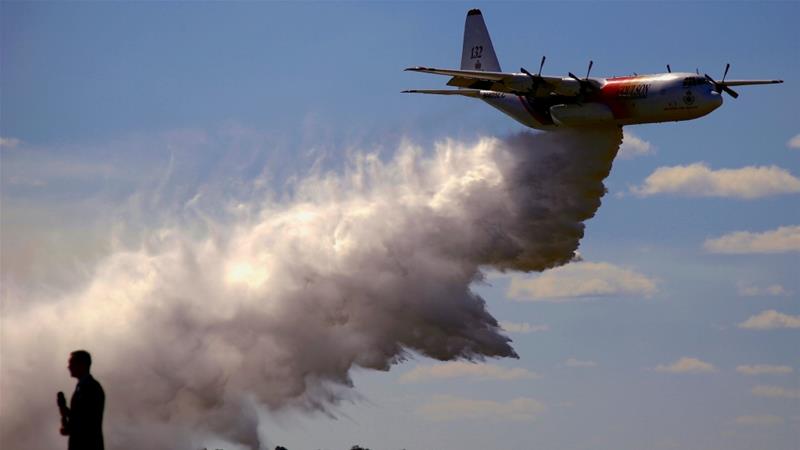Soaring temperatures and strong winds reignited bushfires in Australia's southeast on Thursday cloaking Canberra in hazardous smoke and forcing the airport to close, after a few days of cooler weather brought some relief.
"Arrivals and departures are affected due to aviation firefighting operations," the capital's airport authority said in a tweet.
Another tweet from traffic police said: "The fire is moving fast and there are multiple road closures in the area. Please avoid the area. Local road blocks in place."
On Thursday, the country's effort to fight the raging bushfires turned deadly after a C-130 air tanker crashed in a fireball around 400km (248 miles) south of Sydney. The three people on board the plane were killed.
A fire in the Snowy Mountains region and one in the Bega Valley on the south coast of New South Wales (NSW) state both flared up, with emergency authorities warning residents to get out if they did not plan to defend their properties.
"Fire dangers are just starting to peak, and we're in for a long afternoon and night across many areas of NSW," the state's Rural Fire Service said on its Twitter account.
Further south in Victoria state there were 17 blazes still burning.
Since September, hundreds of bushfires in Australia have killed 29 people and an estimated one billion native animals, while incinerating 2,500 homes and a total area of bushland one-third the size of Germany.
Tourism brunt
In Victoria, the state government on Thursday said it would spend 17.5 million Australian dollars ($12m) immediately to save wildlife hit by the bushfires.
It planned to focus on species most at risk, including the brush-tailed rock wallaby, the state's most endangered mammal, and the long-footed potaroo and large brown tree frog.
The fires, which begun earlier than usual in the spring, hit the peak Christmas and summer holiday holiday season, devastating earnings for businesses dependent on domestic and foreign tourists.
The Australian Tourism Industry Council estimated the revenue loss industry-wide at two billion Australian dollars ($1.4bn), including forward sales and the physical damage to tourism facilities across regions ravaged by bushfires.
"Whatever the numbers ultimately land at, it's had a significant impact," said Simon Westaway, executive director of the council, which represents small and medium-sized tourism businesses.
Cancellation rates hit 100 percent in fire-affected areas while tourist facilities even in areas not affected by fires were hit with cancellation rates of approximately 60 percent, and there is evidence of international booking cancellations too, he said.
"People see a state of emergency and don't know if they'll be able to get in or out," Westaway told Reuters. "This contagion has really swept across the industry."
SOURCE: Reuters news agency




